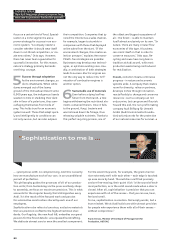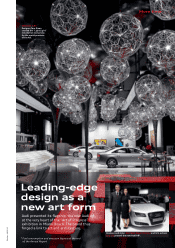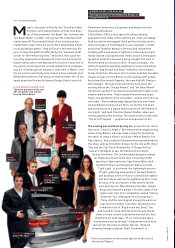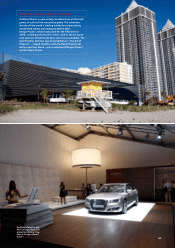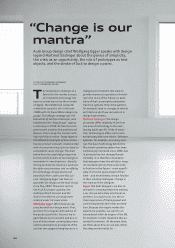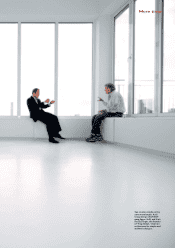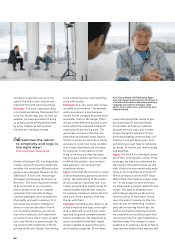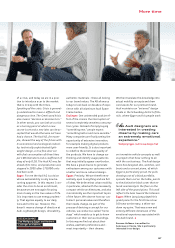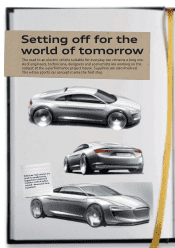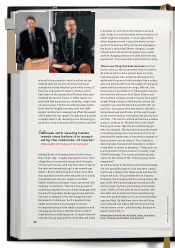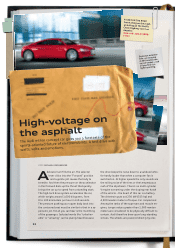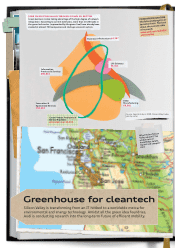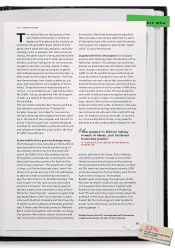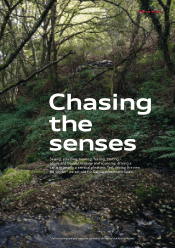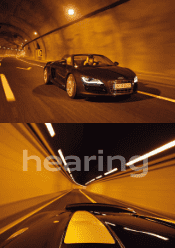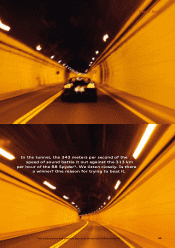Audi 2009 Annual Report Download - page 93
Download and view the complete annual report
Please find page 93 of the 2009 Audi annual report below. You can navigate through the pages in the report by either clicking on the pages listed below, or by using the keyword search tool below to find specific information within the annual report.
who will drive an electric vehicle so that we can
identify what we need to do from a technical
standpoint so that they feel good while driving it.”
Even the originators of electric vehicles, which
have been on the streets since Thomas Davenport
invented the electric motor in 1834, had to con-
tend with battery problems: reliability, weight and
of course range. Electronics enable today’s batter-
ies to last for roughly ten years, and new light-
weight construction materials can offset the weight
of the batteries, but range? The battery of a typical
compact electric car can easily store the energy re-
quired for a trip of around 100 kilometers, and the
average driver in Germany does not drive more
than 70 per day – roughly equivalent to four liters
of gasoline in a conventional gas tank. However:
“Drivers get nervous with only four liters of fuel in
the tank and immediately go to the nearest gas
station. But suddenly they don’t have more than
that available to them when they set out in a fully
charged electric vehicle,” explains van Meel.
Stefan Sielaff as a designer is also concerned with
breaking conventions. “We are in the process of
inventing a separate electric design language with
the aim of completely breaking previous patterns.
You have to imagine it like the change from the
Renaissance to Baroque. Such a quantum leap
needs time before it is accepted, of course.”
An important step on the road to acceptance and
everyday practicality is that the electric vehicle
must become a reliable partner. It must communi-
cate the driving style and the route that will make
it possible to cover the entire distance out and
back. It has to record locations where an electrical
outlet might be available. It must signal if the
driver forgets to hook it up to the electrical net-
work in the evening. Why not by text message to
the driver’s cell phone? When charging, it must
indicate when the electrical system is too weak
and the charging process will takes twice as long
as planned – the requirement specification is long.
There is one thing that Audi customers will not
have to give up: the accustomed level of comfort.
At Audi an electric drive system does not auto-
matically equate with austerity, although every
additional kilogram of vehicle weight has a notice-
able and adverse effect on the supply of energy on
board and thus reduces the range. After all, the
Group has a long tradition of lightweight construc-
tion with the aluminum Audi Space Frame, and
this tradition is being carried on by the Audi Light-
weight Design Center in Neckarsulm, where the
engineers are also developing expertise with car-
bon fiber. Each part of the new electric vehicle is
being developed specifically, all the way through
to the optional extras. Innovation has priority over
sacrifice. “The electric vehicle will become a status
symbol,” predicts Dr. Michael Korte, who heads
the project house. Take the air conditioning sys-
tem, for example. The Audi technicians developed
something entirely new: a heat pump for the car
that uses the waste heat of the electric engines to
heat and warm up the interior. The e-tron also
demonstrates that Audi will tolerate no compro-
mises when it comes to dynamics. “Today your car
is an expression of your position in society,” says
Sielaff knowingly. “Our sporty positioning plays
right into the hands of the ‘forever young’ social
megatrend.”
As solid as some of the technical solutions already
are, the specialists have to look into their crystal
ball to see if demand for them exists and how the
future will look. “If you believe the oil industry
forecasts, the oil supply will be running low by the
year 2050. We’ll presumably be traveling under
electric power by then, particularly in the mega-
cities. Traffic will certainly be much quieter, and
also safer due to advanced driver assistance sys-
tems and sophisticated car-2-car communication,”
says van Meel. By that time the e-tron will long
have achieved cult status. But there will still be
the secret war room – just like today. Because re-
search never ends.
Roland Löwisch writes for Auto Bild, Ramp, brand eins,
Focus, Playboy and Die Welt, among others.
“
A break with viewing habits
needs time before it is accept-
ed by the customer, of course.”
Stefan Sielaff, chief designer of the Audi brand
Photos: AUDI AG, Vuk Latinovic
90


